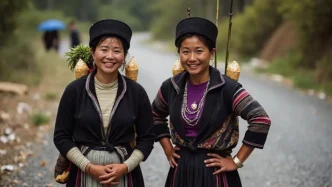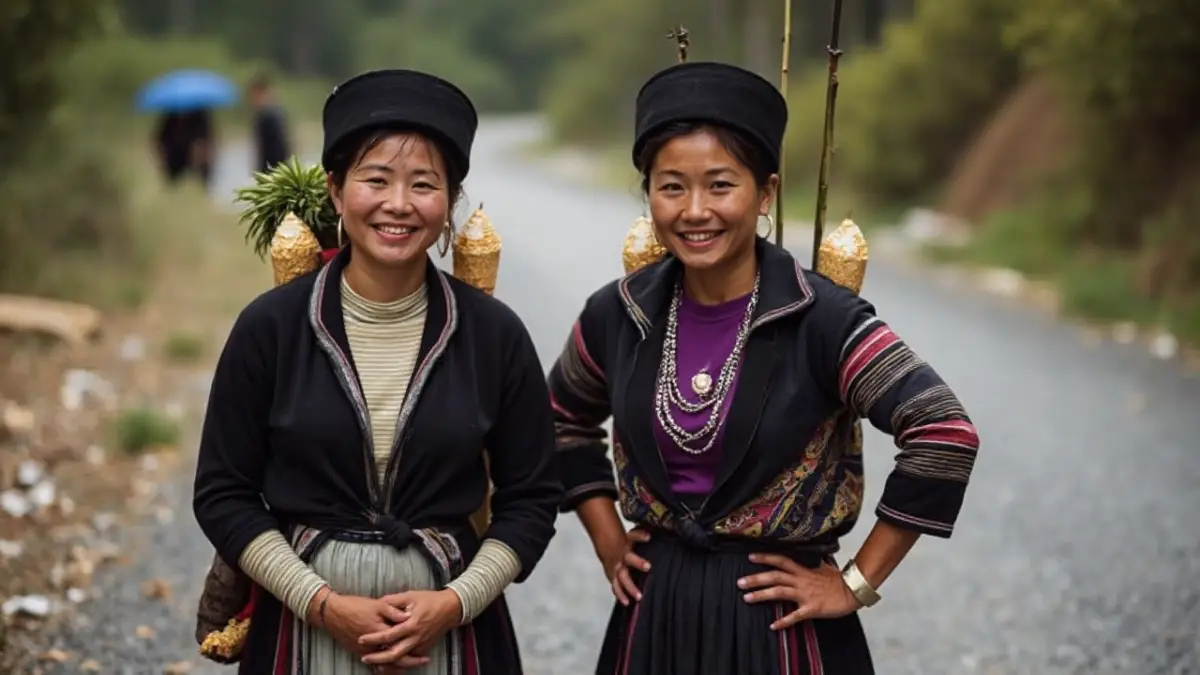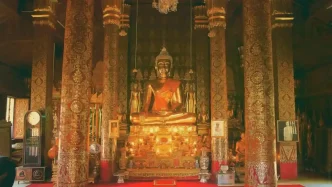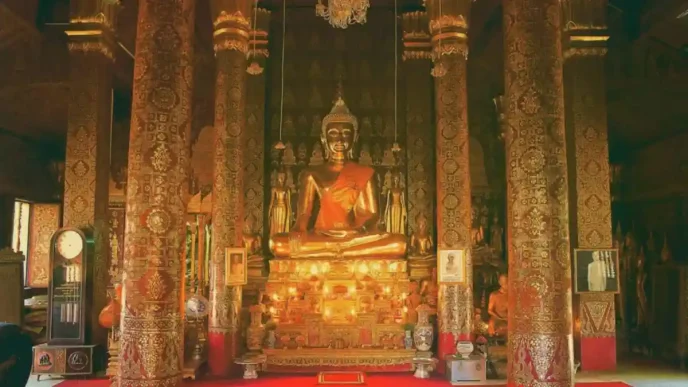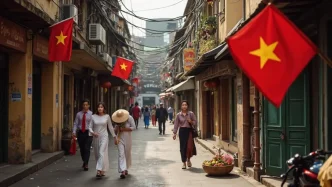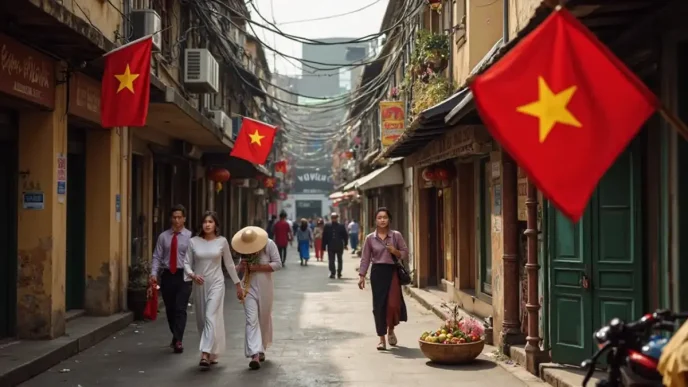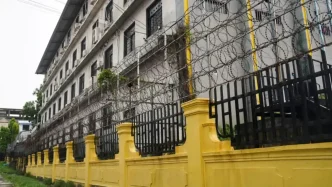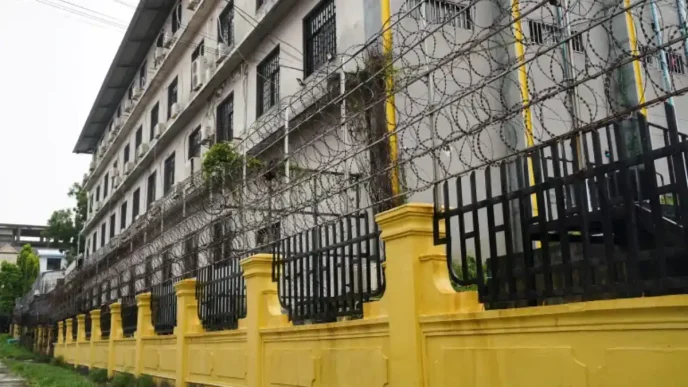In the central province of Nghệ An, Vietnam, the Ơ Đu people, one of the country’s smallest ethnic groups, mark the arrival of their new year with the resonant sound of thunder. Known as the Chăm Phtrong Festival or the New Year Thunder Festival, this vibrant celebration is a cornerstone of Ơ Đu cultural identity, recently recognized by Vietnam’s Ministry of Culture, Sports and Tourism as a National Intangible Cultural Heritage under the category of Social Customs and Beliefs. This annual event, steeped in spiritual significance, not only honors the Thunder God—a supreme deity in Ơ Đu beliefs—but also fosters community unity and preserves a unique agricultural heritage.
Who Are the Ơ Đu?
Numbering fewer than 500 people, the Ơ Đu are one of Vietnam’s smallest officially recognized ethnic groups. They primarily reside in the Tương Dương district of Nghệ An province, a mountainous area in the country’s north-central region. Traditionally semi-nomadic, the Ơ Đu have relied on shifting cultivation, hunting, and foraging for their livelihoods, with rice farming later integrated into their way of life. Their language, Ơ Đu (also known as Tày Poọng), belongs to the Mon-Khmer language family, though it is now at risk of extinction due to dwindling numbers of native speakers and increasing bilingualism with Lao or Vietnamese.
In recent decades, the Ơ Đu have faced mounting challenges: economic marginalization, limited access to education and healthcare, and pressures from cultural assimilation. Many young Ơ Đu now migrate to urban centers for work or schooling, further distancing themselves from traditional practices. Amid these trends, cultural rituals like the Chăm Phtrong Festival serve as vital anchors, helping preserve their unique identity and maintain continuity with their ancestral heritage.
A Spiritual Awakening with the First Thunder
For the Ơ Đu, the new year begins not with a fixed date but with nature’s own signal: the first thunderclaps echoing between February and April on the solar calendar. This natural phenomenon heralds a time of renewal, prompting the community to gather for rituals that cleanse the misfortunes of the past year and welcome prosperity. The festival revolves around the worship of the Thunder God, believed to govern the elements and bless the village with peace, favorable weather, and abundant harvests.
The ceremonies begin with a shaman, alongside village elders and the chief, leading rituals to honor this deity. Offerings, including intricately prepared food trays, are presented as symbols of gratitude and supplication. Following these sacred rites, the shaman beats a gong at dawn, walking through the village to announce the festival’s start. Villagers respond by assembling household items—pots, pans, knives, and baskets—to wash in the Nậm Ngân stream, a symbolic act of purging bad luck and sadness. Women often wash chicken eggs during this ritual, praying for fertility and growth, reflecting the community’s deep ties to agricultural life.
The Thunder God—central to the Chăm Phtrong Festival—is revered by the Ơ Đu as the supreme spirit governing natural forces. Known locally as “Pu Xâng” he is believed to wield the power of rain, storms, and fertility. His thunderous voice is interpreted as both a warning and a blessing—scattering evil spirits while signaling the start of new life. The festival’s rituals are designed not only to honor Pu Xâng but also to align human activity with the seasonal rhythms he controls.
Beyond Pu Xâng, Ơ Đu cosmology includes a rich spiritual hierarchy involving land spirits, ancestral deities, and nature guardians residing in rivers, forests, and sacred groves. Each spirit holds sway over different aspects of life, and ceremonies often begin with petitions to these entities to seek their permission and protection. This belief system reflects the Ơ Đu’s animist roots and a worldview in which all elements of the natural world are alive, conscious, and capable of influencing human fortune.
Rituals of Unity and Hope
The festival unfolds through a series of poignant rituals. Initially, permission is sought from local gods and land spirits to conduct the ceremony, ensuring harmony with the spiritual realm. Villagers then pay homage to the Thunder God and their ancestors, offering communal tributes that underscore their reverence for lineage and nature. A key moment involves the shaman and village chief tying cotton threads around villagers’ wrists, naming and blessing each person with wishes for health and good fortune.
After the formal rites, the atmosphere shifts to celebration. The Ơ Đu engage in traditional dances, mimicking thunder with sounds from bamboo tubes and poking the ground with sharp sticks to symbolize seed sowing—a prayer for a fruitful harvest. Traditional rice wine flows freely, enhancing the communal joy as villagers and returning descendants sing and dance together. These activities not only mark the new year but also strengthen bonds among the Ơ Đu, many of whom travel back to their ancestral village for this occasion.
A Cultural Legacy Rooted in Nature
The New Year Thunder Festival is among the oldest rituals of the Ơ Đu, passed down through generations as a testament to their agricultural lifestyle and symbiotic relationship with the environment. It encapsulates a worldview where nature and spirituality are inseparable, with thunder serving as a divine signal to reset and renew. The festival’s recognition as a National Intangible Cultural Heritage highlights its significance in preserving the Ơ Đu’s cultural identity amid modernization pressures faced by many of Vietnam’s ethnic minorities.
Beyond its spiritual role, the festival acts as a beacon of solidarity. It draws families together, reinforcing a sense of belonging and shared heritage. The event also holds potential for community tourism, offering a glimpse into the Ơ Đu’s unique traditions while supporting local economies and contributing to poverty reduction in Nghệ An province. As visitors witness the vibrant dances and heartfelt prayers, they gain insight into a culture that finds profound meaning in the rhythms of nature.
While the Chăm Phtrong Festival is unique to the Ơ Đu, its themes resonate with other ethnic groups across Vietnam and Southeast Asia. Among the Thai people in northern Vietnam, the Xên Mường ritual honors village guardian spirits and asks for blessings on the agricultural cycle. Similarly, the Hmong observe the Nào Pê Chầu, a New Year ceremony involving offerings to ancestral spirits and natural deities, often tied to seasonal changes and weather phenomena.
These festivals highlight a shared cultural thread: deep spiritual connections to nature, cycles of planting and harvesting, and the belief that divine forces influence earthly success. While expressions vary between groups, they collectively underscore the importance of maintaining harmony with the environment—a value increasingly relevant in today’s climate-aware world.
Preserving Identity in a Changing World
The Ơ Đu, numbering among Vietnam’s smallest ethnic groups, face the challenge of maintaining their traditions in an era of rapid development. The national recognition of their New Year Thunder Festival is a step toward safeguarding this heritage, ensuring that future generations can continue to celebrate the first thunder with the same reverence. It also opens avenues for cultural exchange, inviting broader appreciation of the Ơ Đu’s customs and beliefs.
As the sounds of thunder roll across Nghệ An each year, they carry with them the hopes of a community bound by faith and tradition. The Chăm Phtrong Festival remains a vivid reminder of the enduring power of cultural rituals to unite and inspire, even in the smallest of Vietnam’s ethnic enclaves.

